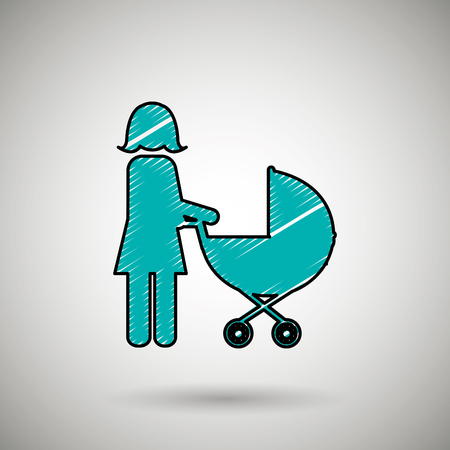1. Get Your Hospital Bag Ready
Packing your hospital bag ahead of time ensures youre prepared when the big moment arrives. Its best to have everything ready by week 36, so youre not scrambling at the last minute. Make sure to include essentials for yourself, your baby, and your partner.
What to Pack for Yourself
- Comfortable clothing (loose-fitting outfits, nursing-friendly tops)
- Toiletries (toothbrush, toothpaste, shampoo, conditioner, deodorant)
- Slippers and cozy socks
- Maternity pads or adult diapers
- Nursing bras and breast pads
- Phone charger and extra-long cable
- Pillow or blanket from home for extra comfort
- Snacks and water bottle
- Important documents (ID, insurance card, birth plan)
What to Pack for Your Baby
- Newborn onesies and sleepers
- Swaddle blankets
- Mittens and socks
- Hat to keep baby warm
- Diapers and wipes (the hospital usually provides some, but extras are helpful)
- Infant car seat (properly installed before going to the hospital)
What to Pack for Your Partner
- Change of clothes
- Pillow and blanket for overnight stays
- Toiletries (toothbrush, deodorant, face wipes)
- Phone charger
- Snacks and drinks
- A book, tablet, or other entertainment while waiting
Hospital Bag Checklist at a Glance
| Category | Essential Items |
|---|---|
| Your Essentials | Comfortable clothes, toiletries, maternity pads, phone charger, snacks, ID & insurance card |
| Babys Essentials | Onesies, swaddle blankets, mittens, hat, diapers, car seat |
| Partners Essentials | Clothes, pillow & blanket, toiletries, phone charger, snacks |
Packing early will give you peace of mind as you approach your due date. Keep the bag in an easy-to-reach spot so you can grab it quickly when its time to head to the hospital!
2. Set Up the Nursery
Getting your babys nursery ready is an exciting and important part of preparing for their arrival. A well-organized space will make those first few months much easier for you and your little one.
Essential Nursery Setup Checklist
Here are the key things to focus on when setting up your nursery:
| Task | Details |
|---|---|
| Assemble the Crib | Make sure the crib is put together properly and meets current safety standards. Use a firm mattress with a fitted sheet. |
| Set Up a Changing Station | Have a sturdy changing table or designated area stocked with diapers, wipes, and creams for easy access. |
| Organize Baby Clothes | Wash all baby clothes, blankets, and bedding in baby-friendly detergent before use. |
| Create Storage Solutions | Use bins, shelves, or drawers to keep baby essentials like clothes, diapers, and toys neatly organized. |
| Ensure Furniture Safety | Secure heavy furniture to the wall to prevent tipping and remove any potential hazards from the nursery. |
| Add Comfortable Seating | A rocking chair or glider can be a lifesaver for late-night feedings and soothing your baby to sleep. |
Stock Up on Baby Essentials
A well-stocked nursery will help you feel more prepared when your baby arrives. Make sure you have plenty of newborn diapers, wipes, burp cloths, swaddle blankets, and other daily necessities. Having everything within reach will make diaper changes and feedings much smoother.
Create a Cozy Atmosphere
Your babys nursery should be a peaceful and comfortable space. Consider using blackout curtains to help with nap times, installing a white noise machine for better sleep, and adding soft lighting for nighttime feedings. Keep decorations simple and soothing—your baby will love looking at soft colors and gentle patterns.
A Final Check for Safety
The last step is ensuring everything is safe for your little one. Double-check that all furniture is securely assembled, outlets are covered, cords are out of reach, and there are no small objects within grasping distance. A safe nursery gives you peace of mind as you prepare to bring your baby home.

3. Finalize Your Birth Plan
As your due date approaches, its important to have a clear birth plan in place. While childbirth can be unpredictable, having a plan helps communicate your preferences to your healthcare team and support system.
Discuss Your Preferences with Your Healthcare Provider
Talk to your doctor or midwife about how you envision your labor and delivery. Consider the following aspects of your birth experience:
| Category | Options to Consider |
|---|---|
| Pain Management | Epidural, IV medications, natural pain relief techniques (breathing, movement, hydrotherapy) |
| Labor Positions | Walking, birthing ball, squatting, side-lying, hands-and-knees position |
| Delivery Preferences | Delayed cord clamping, immediate skin-to-skin contact, partner cutting the cord |
| Special Requests | Dim lighting, music playlist, minimal medical interventions if possible |
Share Your Plan with Your Support Team
Your birth plan should be shared with everyone who will be present during labor and delivery. This includes your partner, doula (if applicable), and any family members who will support you.
Tips for Communicating Your Birth Plan:
- Keep it flexible—things may not go exactly as planned.
- Print multiple copies for easy reference.
- Discuss backup options in case of unexpected changes.
- Make sure your partner or support person understands your priorities.
Be Open to Adjustments
While having a birth plan is helpful, its equally important to stay open-minded. Labor and delivery can be unpredictable, so being adaptable will help you feel more at ease no matter what happens.
4. Install and Check the Car Seat
Ensuring your babys car seat is properly installed is one of the most important tasks before bringing your little one home. A correctly installed car seat provides essential protection in case of an accident and ensures a safe ride for your newborn.
Choose the Right Car Seat
Newborns should always be placed in a rear-facing car seat that meets current safety standards. There are two main types to consider:
| Type | Description |
|---|---|
| Infant Car Seat | Designed specifically for newborns, these seats have a base that stays in the car while the seat itself can be removed and used as a carrier. |
| Convertible Car Seat | Can be used from infancy through toddlerhood by adjusting its settings, but it remains fixed in the car. |
Proper Installation Matters
Car seats must be installed tightly and at the correct angle to ensure your babys safety. Follow these steps for proper installation:
- Read both your car seat manual and vehicle owner’s manual carefully.
- Use either the LATCH system or seat belt—never both—to secure the seat.
- The car seat should not move more than an inch in any direction when pulled at the base.
- The harness straps should sit at or below your baby’s shoulders and pass the “pinch test” (you shouldnt be able to pinch excess slack).
Get a Free Safety Inspection
If youre unsure about installation, many local fire stations, police departments, and hospitals offer free car seat inspections by certified technicians. These experts can check your setup and provide guidance to ensure maximum safety.
Double-Check Before Delivery Day
A few final checks before heading to the hospital:
- Ensure the car seat is properly secured in the back seat, preferably in the middle position.
- Adjust the straps to fit your newborn snugly.
- Remove any bulky clothing or blankets before buckling up to ensure a proper fit.
- Have an extra mirror installed if needed so you can easily check on your baby while driving.
Taking these steps now will give you peace of mind knowing that your baby will have a safe ride home from the hospital.
5. Prepare for Postpartum Recovery
As your due date approaches, its important to prepare for your postpartum recovery. Your body will need time to heal, and having the right essentials on hand can make a big difference in your comfort and well-being. Here are some key steps to take before your baby arrives.
Stock Up on Postpartum Care Essentials
Having a well-stocked postpartum care kit will help you focus on rest and recovery. Consider gathering the following items:
| Essential Item | Why You Need It |
|---|---|
| Maternity Pads | You’ll experience postpartum bleeding (lochia) for several weeks, so high-absorbency pads are a must. |
| Pain Relief (Ibuprofen, Acetaminophen) | Pain relievers help manage discomfort from vaginal delivery or C-section recovery. |
| Peri Bottle | This helps keep the perineal area clean and provides relief after using the bathroom. |
| Nursing Pads | If you’re breastfeeding, these help prevent leaks and keep you comfortable. |
| Comfortable Clothing | Loose-fitting, soft clothing makes it easier to rest and recover. |
Plan for Easy Meals
Caring for a newborn can be exhausting, and cooking might be the last thing on your mind. Preparing meals ahead of time can be a lifesaver. Here are some ideas:
- Freezer Meals: Cook and freeze dishes like soups, casseroles, and pasta sauces that can be easily reheated.
- Simplified Grocery List: Stock up on healthy snacks such as granola bars, yogurt, and pre-cut fruits and vegetables.
- Meal Delivery Services: Consider signing up for a meal delivery service or asking friends to bring over home-cooked meals.
Arrange for Extra Help
The first few weeks postpartum can be overwhelming, so don’t hesitate to ask for support. Here’s how you can plan ahead:
- Family & Friends: Ask loved ones if they can assist with household chores, babysitting older kids, or running errands.
- Doulas or Postpartum Caregivers: If possible, consider hiring professional help for additional support.
- Create a Support Schedule: Organize a schedule where different people help on different days to avoid burnout.
A little preparation now can make your postpartum journey smoother and allow you to focus on bonding with your baby while giving yourself the care you deserve.
6. Take Care of Important Paperwork
As you prepare for your babys arrival, its essential to take care of key paperwork to ensure a smooth transition into parenthood. From maternity leave forms to hospital registration, getting these details sorted out ahead of time can help reduce stress later.
Double-Check Your Maternity Leave Paperwork
If youre employed, review your companys maternity leave policy and make sure all necessary paperwork is submitted on time. Confirm your start and return dates with your employer and clarify any benefits you may receive during your leave.
Update Your Insurance Details
Check with your health insurance provider to confirm that your baby will be covered from birth. Some plans require pre-registration or additional steps to ensure coverage. If applicable, update your life insurance policy to reflect your growing family.
Review Hospital Registration
Many hospitals allow you to pre-register for delivery, which can save time when you arrive in labor. Contact your chosen hospital or birthing center to confirm what paperwork needs to be completed before your due date.
Consider Legal Documents
While it may not be the most exciting task, taking care of legal documents can provide peace of mind. Consider discussing the following with a legal professional:
| Document | Description |
|---|---|
| Will | Outlines how your assets will be distributed and who will care for your child if something happens to you. |
| Guardianship Assignment | Designates a trusted person to care for your child if youre unable to do so. |
| Power of Attorney | Allows someone you trust to make financial or medical decisions on your behalf if needed. |
Organize Everything in One Place
Create a folder or digital file with all important documents related to maternity leave, insurance, hospital registration, and legal matters. Keeping everything together makes it easy to access when needed.


